
- ChatGPT - Home
- ChatGPT - Fundamentals
- ChatGPT - Getting Started
- ChatGPT - How It Works
- ChatGPT - Prompts
- ChatGPT - Competitors
- ChatGPT - For Content Creation
- ChatGPT - For Marketing
- ChatGPT - For Job Seekers
- ChatGPT - For Code Writing
- ChatGPT - For SEO
- ChatGPT - For Business
- ChatGPT - Machine Learning
- ChatGPT - Generative AI
- ChatGPT - Build a Chatbot
- ChatGPT - Plugin
- ChatGPT - GPT-4o (Omni)
- ChatGPT in Excel
- ChatGPT for Test Automation
- ChatGPT on Android
- Make Money with ChatGPT
- ChatGPT for UI/UX Designers
- ChatGPT for Web Developers
- ChatGPT for Data Scientists
- ChatGPT for Bloggers
- ChatGPT for Personal Finance Management
- Automate Customer Support with ChatGPT
- Create Content Calendars with ChatGPT
- Plan Events and Trips with ChatGPT
- Draft Legal Documents with ChatGPT
- Improve Your Coding Skills with ChatGPT
- New Language with ChatGPT
- Optimize ChatGPT Responses for Better Accuracy
- ChatGPT Useful Resources
- ChatGPT - Quick Guide
- ChatGPT - Useful Resources
- ChatGPT - Discussion
ChatGPT Prompts
We used the word "prompt" while discussing how users interact with ChatGPT and other Open AI models. In this chapter, we will discuss the significance of "prompt engineering" to enhance models accuracy.
The way prompts are designed and crafted influence the output of the model in the following ways −
A well-designed prompt can guide the model to produce relevant and precise output.
Whereas a poorly designed prompt may result in irrelevant or confusing output.
This is just a basic chapter on how you can use different types of prompts in ChatGPT to get the exact information you are looking for. We would like you to refer our tutorial Prompts Engineering where you will find extensive detail on this topic.
Prompts and Their Significance
Generative AI models can create various things like poems, stories, images, and code as per user request. However, to get the output we want, we have to give these models the right instructions, known as prompts.
Prompts, which mainly refer to a segment of text in natural language, are like the guide for the generative AI model's output, affecting its tone, style, and overall quality. In fact, prompts are the only way a user can direct the output generated by these models.
Types of Prompts for ChatGPT
The categories of prompts used in ChatGPT act as guidelines or instructions provided to GPT to steer and control specific kinds of responses and conversations. Let's explore the commonly used prompts and understand the ways they can be beneficial.
Instructional Prompts
Instructional prompts are commands that direct the model with specific instructions on the desired format or information to include in the response.
Lets see an example below −
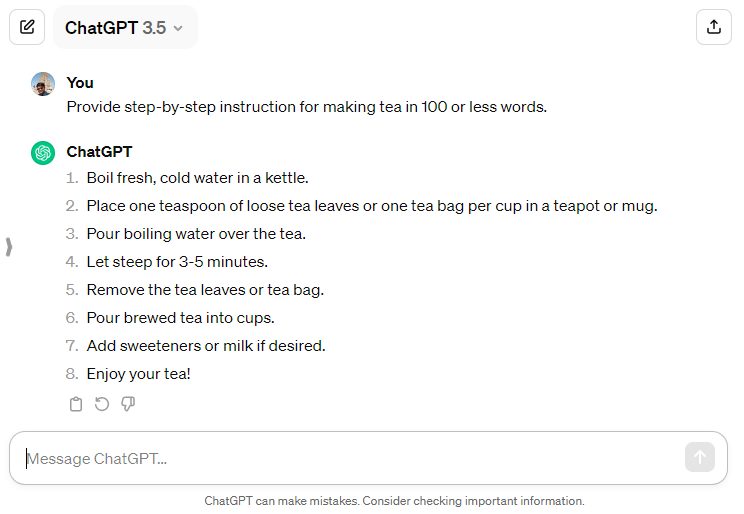
Roleplay Prompts
Roleplay prompts are commands that frame the input as if the model is a character or has specific role, guiding its response accordingly.
Consider the following example −
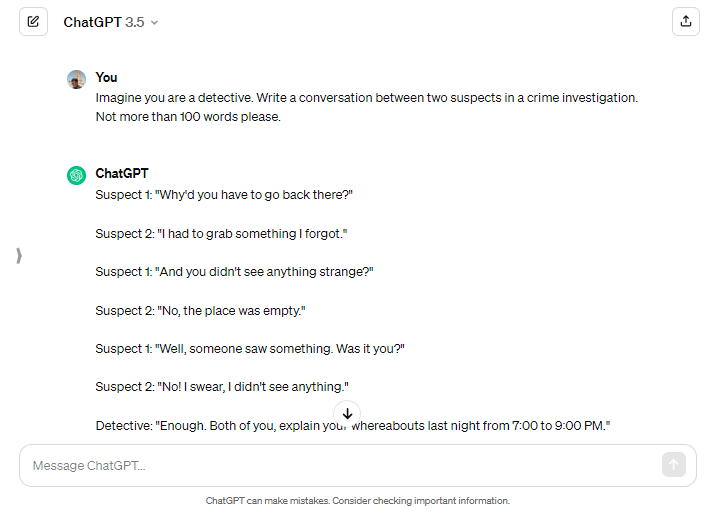
Question-Answer Prompts
As the name suggests, QA prompts are commands that pose questions to the model to elicit informative or creative answers.
Take a look at the following example −

Contextual Prompts
Contextual prompts provide context or background information to guide the models understanding and response.
Check the following example −
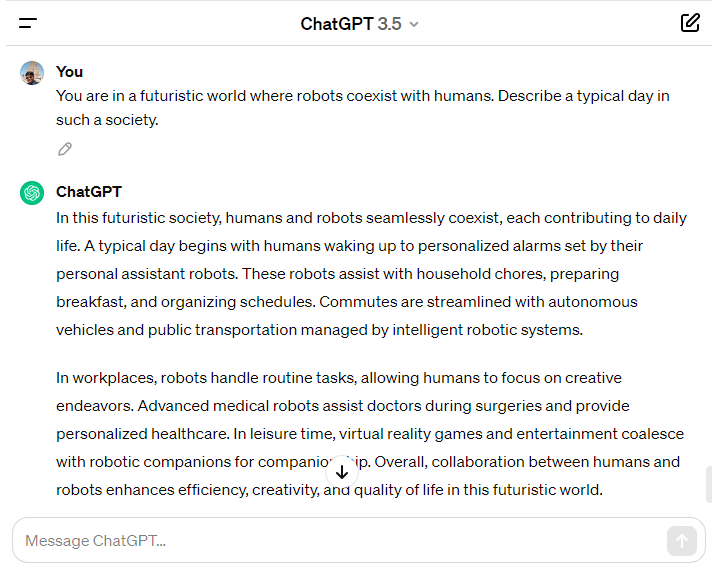
Creative Storytelling Prompts
Creative storytelling prompts encourage the model to generate imaginative or creative narratives by setting up scenarios or story elements.
Observe how the following prompt works in this example −
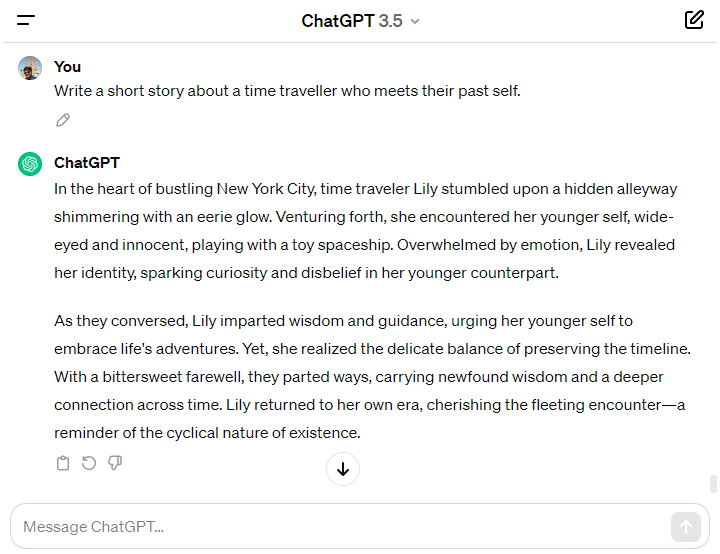
Conditional Prompts
Conditional prompts specify conditions or constraints for the response to guide the model's output in a particular direction.
Explore the following example −
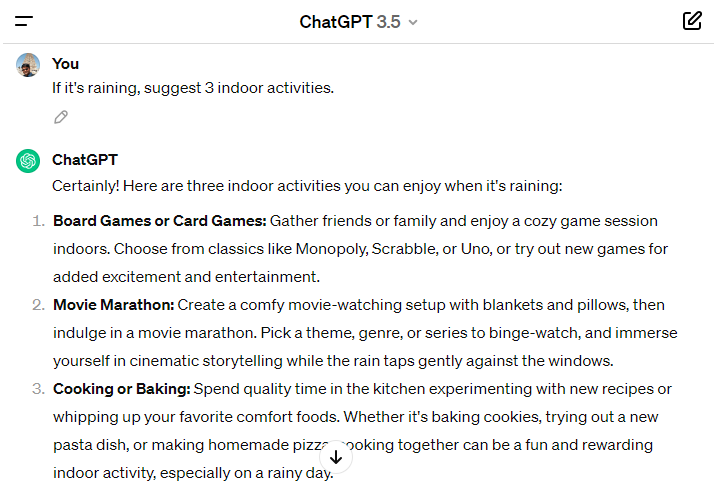
Comparison Prompts
Comparison prompts ask the model to compare or contrast different concepts, ideas, or scenarios. Consider the following example −
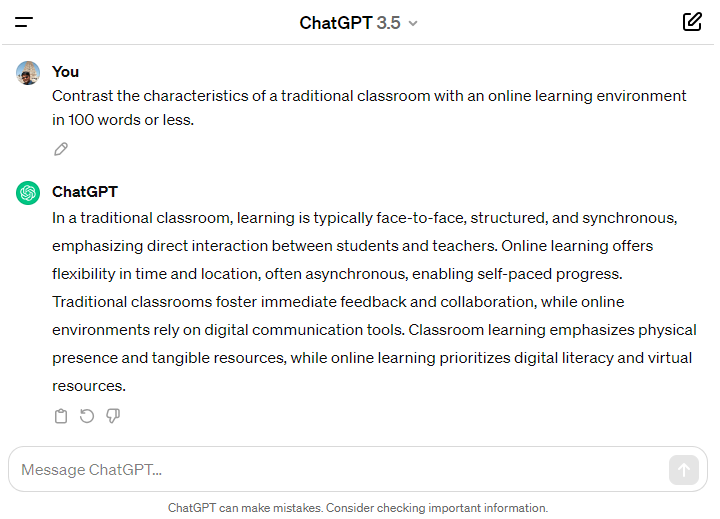
Instructive Prompts
Instructive prompts clearly instruct the model on the desired behavior or approach in its response. Take a look at the following example −

Principles of Well-Defined Prompts
In the earlier discussion, we emphasized the significance of prompt engineering in influencing model output. Now, let's delve into recommended practices for improving your prompts and identify some practices to avoid.
Ensure Clarity
Frame your sentences and instructions in a simple manner, making them easily understandable for ChatGPT.
Be Concise
Choose shorter prompts and sentences. Break your instructions into smaller, coherent sentences for improved understanding.
Maintain Focus
Ensure that the prompt centers on a clearly defined topic to avoid the risk of producing overly generic output.
Consistency
Maintain a consistent tone and language during the conversation for a more coherent interaction.
Acting as
The technique of having ChatGPT assume the identity of someone, or something has shown remarkable effectiveness. You can streamline the information you need from the model by instructing it to "act like" the desired person or system.
Weve already seen the roleplay prompt example in the previous section, where ChatGPT acted as a detective.